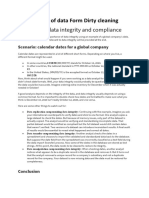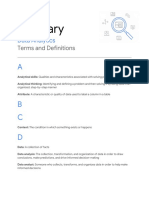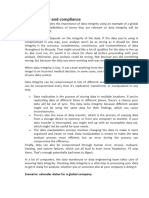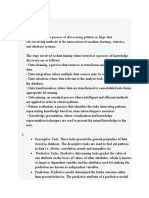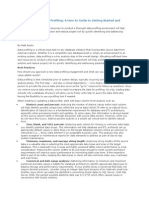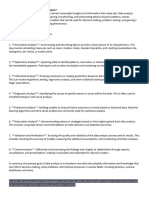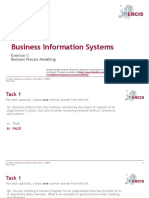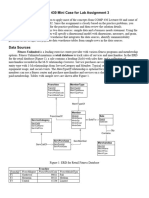0% found this document useful (0 votes)
63 views2 pagesData Profiling Essentials
Data profiling involves analyzing data at the column, row, table, and cross-table levels to identify issues such as invalid values, inconsistent representations, missing data, and violations of structural or logical rules. It is a multi-stage process that examines individual values, value distributions within columns, data structures, and relationships within and between tables to validate data quality and uncover potential problems. Examples of issues found include empty columns, values outside expected ranges, inconsistent formatting, and violations of dependencies or business rules.
Uploaded by
tab12345Copyright
© © All Rights Reserved
We take content rights seriously. If you suspect this is your content, claim it here.
Available Formats
Download as PDF, TXT or read online on Scribd
0% found this document useful (0 votes)
63 views2 pagesData Profiling Essentials
Data profiling involves analyzing data at the column, row, table, and cross-table levels to identify issues such as invalid values, inconsistent representations, missing data, and violations of structural or logical rules. It is a multi-stage process that examines individual values, value distributions within columns, data structures, and relationships within and between tables to validate data quality and uncover potential problems. Examples of issues found include empty columns, values outside expected ranges, inconsistent formatting, and violations of dependencies or business rules.
Uploaded by
tab12345Copyright
© © All Rights Reserved
We take content rights seriously. If you suspect this is your content, claim it here.
Available Formats
Download as PDF, TXT or read online on Scribd
/ 2
